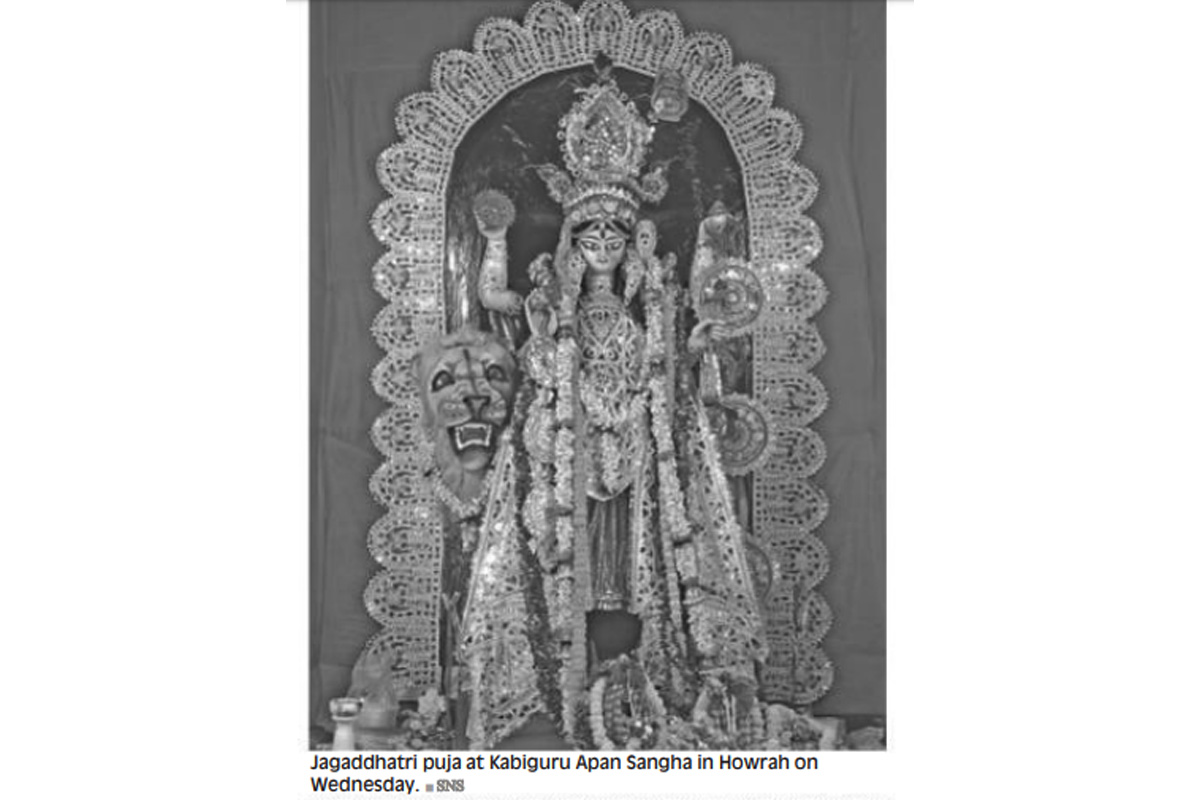CM Mamata Banerjee in Chandannagar for Jagaddhatri Puja
Miss Banerjee offered Anjali to Goddess Jaghaddhatri at Bodo Kalitala and then went to Bodo Sarwajanini.
Thousands of Krishnagar people enjoy the puja with limitless vigor, and they never get tired despite various forms of harassment and mismanagement, said a local resident.

Photo: SNS
Jagaddhatri Puja is a festival as old as this district town and one that defines it, a festival of dazzling lights and processions, of enormous effigies, revelry and merrymaking.
Like every other year, this year too, most of the clubs organising Jagaddhatri puja have concentrated on traditional themes or tried to blend the traditional with the modern. Beside the clubs organising pujas, different Baroari pujas have added much glamour to the grand festival where hundreds of thousands of people from different parts of the district and state gather every year.
Advertisement
This year too, district administration and police have arranged elaborate security, but with every passing year, traffic and crowd control has become a challenging task for both the administration and police.
Advertisement
At the prominent club pujas where thousands of people visit for their themes and some baroari pujas like Burima in Chasapara, Chotoma in Kanthalpota, Patrabazar and Chakerpara, police and puja organisers failed to control the overflooded crowd.
Many people alleged that some ‘uncultured people’ and hooligans at few prominent puja committees take control of the pujas at the end whom the police cannot resist leading to gross harassment of the people.
Here, Jagaddhatri puja is organised for a day on Navami, but immersion continues for two days. On the first day of immersion, a new concept of Ghat immersion has been implemented for the last few years where every puja committee and baroari takes part in a grand procession.
The puja committees with their Ghats and tableaus go first to the Rajbari and then head to the Khore river. The whole immersion procession takes place through a single route from Rajbari to Khore river.
Thousands of people after paying visit to the pandals overnight gather again on the both sides of the road, where the ghat immersion is organised on the first immersion day. The immersion which normally starts from 10 a.m, ends at around 4 p.m.
Thousands of Krishnagar people enjoy the puja with limitless vigor, and they never get tired despite various forms of harassment and mismanagement, said a local resident.
It is popularly believed that Maharaja Krishna Chandra of Nadia started the Jagaddhatri Puja in Bengal According to legend, Goddess Jagadhatri was originally worshipped by the Dravida clan, hundreds of years ago, before Raja Krishna Chandra Roy of Krishnanagar inaugurated the Puja in his royal palace.
History tells us that Raja Krishna Chandra Roy was imprisoned by the Nawab of Bengal and thus was unable to perform the Puja.
Dejected and anguished he had a divine intervention from the holy mother, asking him to worship her on the ninth day of the lunar Calendar ~ Shukla Navami. In Tantra and Purana, Jagaddhatri is depicted as having the colour of the morning sun, three-eyed and with four arms, holding Chakra, conch, bow and arrow. Decked out in red attire, bright jewels and “nagajangopaveeta”, a symbol of Yoga and the Brahman, she rides a lion standing on the dead Karindrasura, the Elephant Demon.
As the name suggests, she is worshipped as the one who protects the world. The elephant is a symbol of man’s ego and thus it signifies the victory of good over evil. ‘If a woman can destroy her creation as Goddess Durga then she alone can sustain the world as Jagadhatri’ is the underlying message of the festival.
Advertisement